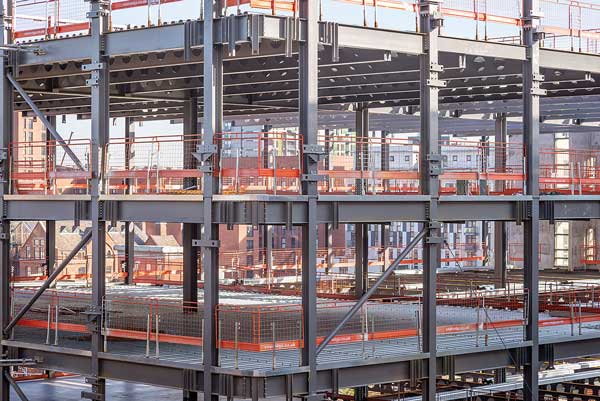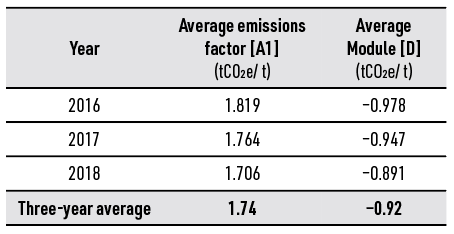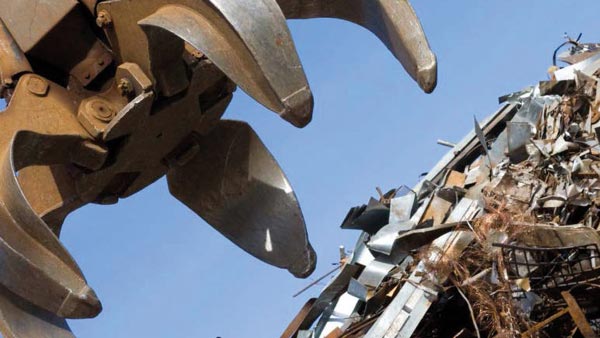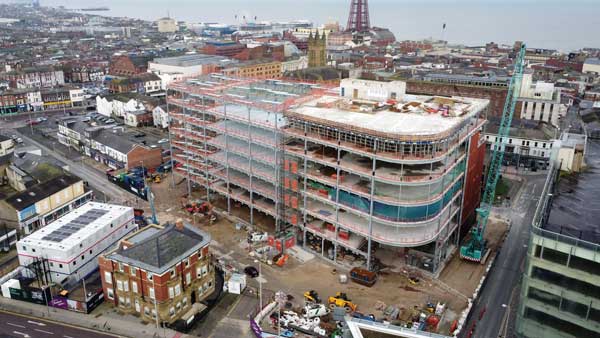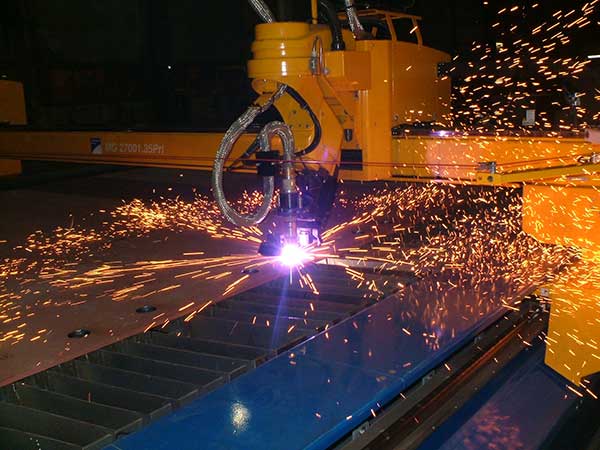Projects and Features
UK average embodied carbon of structural steel
Ana Girão Coelho of the British Constructional Steelwork Association (BCSA) and Michael Sansom of the Steel Construction institute (SCI) present the findings of some new research to establish the first average emissions factor for structural steel specifically for the UK construction market.
Growing awareness of the need to reduce greenhouse gas emissions is impacting the construction industry and more attention is being paid to the carbon emissions associated with the construction materials we specify and use; commonly referred to as embodied carbon.
The structure makes up a large proportion of the overall embodied carbon impact of the building, typically 60% of the impact of a multi-storey building (Modules A1-A5). Consequently attention is focussing on the embodied carbon of the structure and importantly, how this can be measured and reduced.
Embodied carbon targets for buildings have been published by RIBA, LETI and the Mayor of London and structure-specific targets have recently been proposed by the IStructE. Although these targets are voluntary, there are growing calls to regulate embodied carbon, for example through the Building Regulations, as is currently done for operational carbon emissions.
Environmental information, including embodied carbon, for steel construction products is commonly made available to designers by means of environmental product declarations (EPD). These are generally, producer-specific declarations. During the early design stages however, where the steel supplier is unknown, the question arises over what embodied carbon value to use for structural steelwork.
Steel sections are globally traded commodity products and therefore the most appropriate embodied carbon value to use is one based on an average value of structural steel used in the UK. Note that this is a consumption-based average rather than a production-based UK average.
In its recent publication on the carbon credentials of structural steel, BCSA recommended using the European average embodied carbon value from the European sections and plate EPD[1] published in 2018. This was the most representative UK average value available at the time but was criticised by parts of the construction sector since it did not include any UK production. In response to this BCSA and SCI have now derived a UK average embodied carbon for structural steel sections by obtaining UK demand and import data from the International Steel Statistics Bureau (ISSB). These data have been corroborated with additional data held by BCSA and provided by CRU. Using this data, together with embodied carbon impact data for UK production[2], European production[1] and rest of the world production[3] of hot-rolled sections, BCSA has derived the embodied carbon (Module A1) values for 2016-2018, these being the latest years for which data are available.
In addition to steel production carbon emissions (Module A1) data are also provided for Module D which is an important metric for quantifying the circular economy and particularly the inherent reuse and recycling benefits of structural steel. Note that Module D has been calculated using the methodology included in the World Steel life cycle inventory report[4]. The negative Module D values indicate a saving through future reusing and recycling.
In summary therefore, the BCSA recommends the use of the following average emissions factors for embodied carbon assessments conducted when the source of the structural steel is not known:
- For Module [A1], 1.74 tCO₂e/t of sections.
- For Module [D], −0.92 tCO₂e/t of sections.
It is noted that these latest recommended UK average values compare well with the earlier (2013) European sections and plate EPD[5], which did include UK sections production.
Reflecting the volatility of the UK market for steelwork, the BCSA will update these recommended averages periodically.
For further information, please contact Ana M. Girão Coelho
(ana.girao-coelho@steelconstruction.org)
References
[1] bauforumstahl e.V. (2018). Environmental Product Declaration – Structural Steel: Sections and Plates, Declaration No. EPD-BFS-20180116-IBG2-EN.
[2] British Steel (2020). Environmental Product Declaration – Steel rails and Sections, Declaration No. EPD-TS-2020-003.
[3] LCI data for steel products: 2019 LCI data release. World Steel Association
[4] World Steel life cycle inventory report (2017)
[5] bauforumstahl e.V. (2013). Environmental Product Declaration – Structural Steel: Sections and Plates, Declaration No. EPD-BFS-20130094-IBG1-EN.
Acknowledgments
The BCSA gratefully acknowledges the support from ISSB and CRU. The International Steel Statistics Bureau (ISSB Ltd) is a leading supplier of global trade data for steel and raw materials,
https://www.issb.co.uk/
The CRU Group delivers independent market analysis on a comprehensive range of global commodities, https://www.crugroup.com/
Dr Ana M. Girão Coelho, Director of Engineering, BCSA
Dr Michael Sansom, Associate Director – Sustainability, SCI








